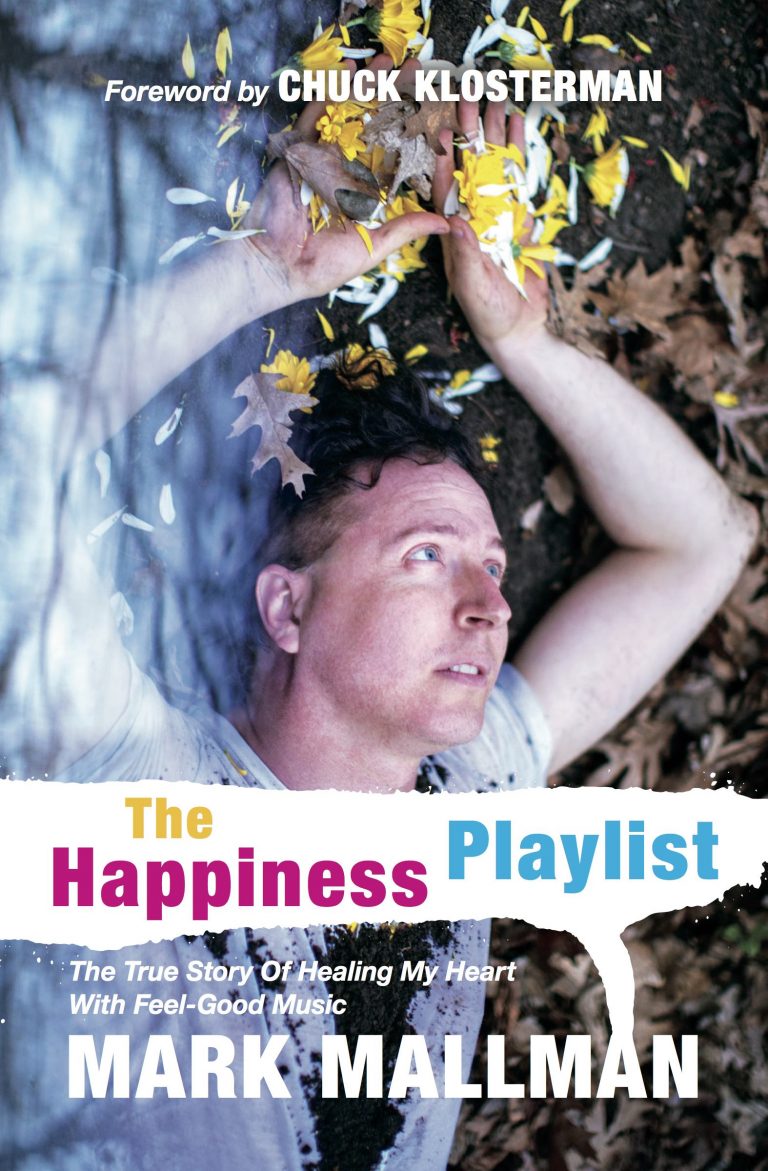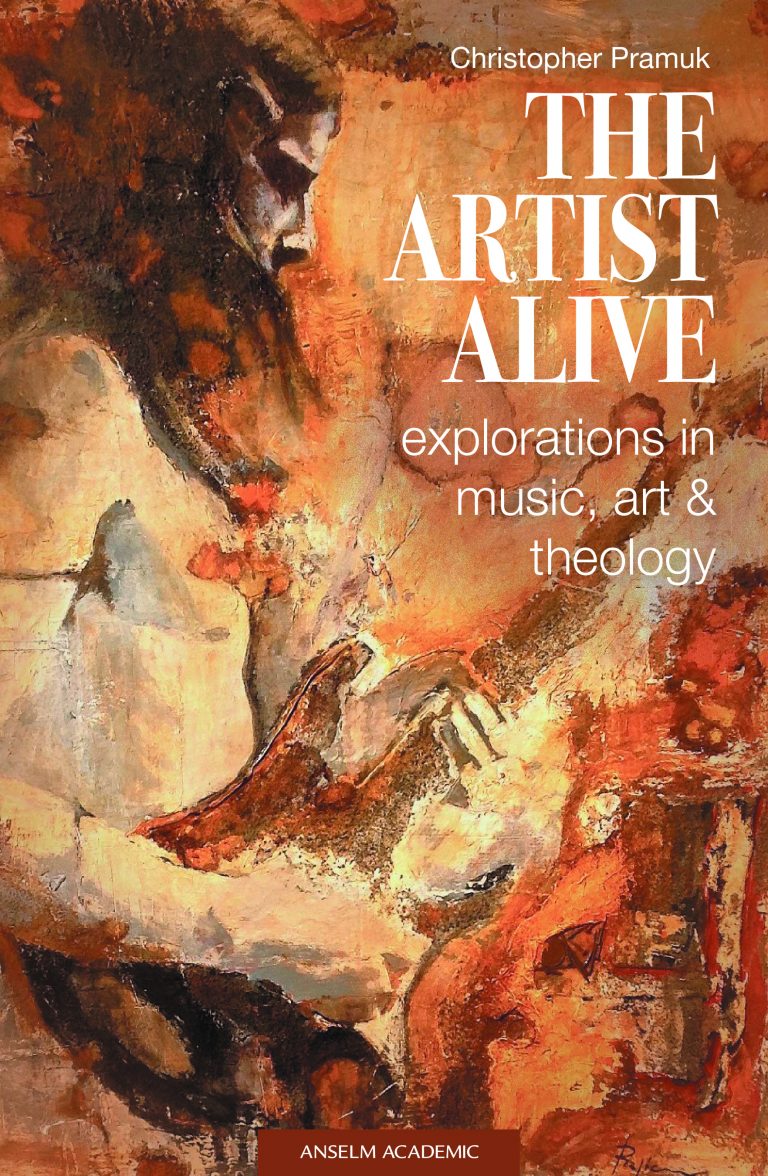
The Transformative Power of Music
Music throughout history has provided people a means to gather, talk, worship, pray, celebrate, dance, sing, meditate. Music is both communal and profoundly personal, providing comfort, happiness, inspiration, joy. Many of us have music playlists—for in the car, at the gym, on a walk.
We recently asked two author-musicians to reflect on the role music has played, and continues to play, in their lives, and specifically how music influences and informs their religious and spiritual understandings. Their reflections follow.
When Minneapolis musician Mark Mallman began suffering from unrelenting panic attacks, he turned to music to help with his healing. Not just any music, and not to the heavier, edgier stuff that had been some of his favorite acts—Nine Inch Nails, Patti Smith, Joy Division.
He turned to happy music.

Mallman created a soundtrack for what became the title of a book about the experience, a soundtrack dubbed, The Happiness Playlist (Think Piece Publishing, 2019). “People who are going through s… need light,” he told Citypages (March 22, 2019). “It’s not a heavy book. It’s a light book about a few heavy topics. But it’s also about music as a path to joy.”
Mallman largely traces his mental health struggles to the sudden death of his mother in 2013. “I lost my mind when my mom died. I lost my relationship with reality. I feel like my DNA changed,” he told Citypages. Music—along with therapy, exercise, diet, the support of friends, a loving father—helped restore it.
At the height of his anxiety, music helped provide Mallman the comfort he sorely needed to return to health. One book reviewer writes of The Happiness Playlist: “Speaking with conviction to the notion that music can heal, The Happiness Playlist is a memoir with the potential to inspire others to see music as a comfort, a companion, and a healing balm.” (Clarion Reviews, Feb. 1, 2019)
“Comfort,” “companion,” “healing balm”—words often attributed to religion and religious experience. Does Mallman see a connection between music and religious experience?
“Music can be all those things too,” Mallman says. “And for many musicians, the act of performance is a religious experience in and of itself. It celebrates life. In my book, I use music to channel my heart from the muck of ‘Real Life.’
And for many musicians, the act of performance is a religious experience in and of itself. It celebrates life. In my book, I use music to channel my heart from the muck of ‘Real Life.’
Mark Mallman
“Music is an element. It is not unlike water. Water can be applied to our lives however we see fit. Not only to keep us alive, but to facilitate a more fruitful life. The majority of the songs on my happiness playlist are in the major key. Gospel and Funk are some of the few genres that have happy lyrics in the minor key. When it’s time for me to address the spiritual, the song of a bird or the wind is more sacred than any songs a person could write. There is no playlist happier than that of the natural world.”
He says this about the presence of faith in his life: “I’m not religious in traditional ways. I’ve developed my own beliefs that combine things, though I still pray at night to who is mostly the God I was raised under and the God my father and mother practiced to.”
Mallman continued: “As an adult, I find the spiritual world all around me. I’ve devoted my life to manifesting joy where once was a void. I serve the world this way, first through music and now with a book about music. I believe music can manifest love. I do not align myself with negativity, judgment, or hatred. I was raised in an awesome Catholic church called Saint John Neumann Parish in Waukesha, Wisconsin.
“I still practice many ideals taught to me as a boy. The top of those values is to listen with an open heart. When paired with music, internal worlds of struggle can be conquered. In my book, I dedicate a six-month period of listening exclusively to a playlist of happy music. What I learned from it was that music releases us from the constructs and failings of the modern world. It touches us where words fail. This is the root of our healing from the confines of daily life.”
I still practice many ideals taught to me as a boy. The top of those values is to listen with an open heart. When paired with music, internal worlds of struggle can be conquered.
Mark Mallman
It is well documented that anxiety and depression are rising among young people. One new analysis reports that the number of children and teens in the United States who visited emergency rooms for suicidal thoughts and suicide attempts doubled between 2007 and 2015.
Says Mallman, “My heart goes out to those struggling with anxiety and depression. It’s not easy. Much is kept under the surface. If you suspect someone is suffering, reach out. Ask them if they want to see a movie or get some lunch. Invite them to the barbeque. Play some uplifting music. An act of kindness will reach deeper than you’ll ever see. There is no place in the world for hatred or cruelty. Let’s recognize through hardships, we can lean on positive music to pull us through. When people seem to be failing us, the music is its own reward. I learned so much in the process of writing this book.”
Christopher Pramuk is Chair of Ignatian Thought and Imagination and an associate professor of theology at Regis University in Denver.
He’s also a classically-trained pianist and lifelong music lover. His latest book, The Artist Alive: Explorations in Music, Art, and Theology (Anselm Academic, 2019), weaves together all these loves as he writes of the transformative power of art—finding in the arts a way of seeing, hearing, and praying, inspiring in artist and the person receiving the art a sense of contemplation, imagination, prophetic action, and wonder.
Asked specifically of the relationship he sees among music, growing up, and a sense of religious longing, Pramuk offered this.

“Growing up in a house that was fairly chaotic—loving, but chaotic—music was for me a kind of refuge, a safe harbor, a place of discovery and happiness. As a young student of the piano, I could disappear for hours in the latest releases of Elton John, Billy Joel, and Stevie Wonder—but I was also drawn to Keith Emerson of Emerson Lake and Palmer, Rick Wright of Pink Floyd, and Joe Zawinul of Weather Report. To this day, Keith Jarrett’s ‘The Koln Concert’ is my go-to record for deepening down when I need simply to find the center. And the opening six minutes of Elton John’s ‘Funeral for a Friend’—as a teenager I was mesmerized by the grandeur of it, and still am forty years later.
“Outside the church these artists were my primary evangelizers. Like the resurrection of Jesus, they blew the door off the upper room for me, beckoning me into the world of creativity, possibility, culture. To say it better, the line between them and church for me was very thin. The chorus of Beethoven’s 9th is an explosion of sacred ecstasy, to be sure, but then so is Claire Torry’s vocal on Pink Floyd’s ‘Great Gig in the Sky,’ set against Rick Wright’s incomparably sublime, jazz-infused piano musings. I still wonder at the miracle of her wordless primal singing. The listener cannot I think but tremble with awe.
“Is it a cry of suffering? Of religious longing? Of sexual ecstasy? The painful yet joyful catharsis a woman feels when birthing a child? The unutterable anguish she feels when losing one? Perhaps it’s the ineffable yearning that could describe all of these colors of the birthing that stirs such recognition and awe in the receptive listener. I don’t know. I do know that listening to ‘Great Gig’ makes me happy, in the way that walking into a strange church makes me happy—finding its front door unlocked, turning the handle, stepping eagerly inside, making my way into the sanctuary. Letting the silence, the darkness, the play of light through stained glass, wash over me.
“When I began teaching some twenty-five years ago, intuitively I wanted my students to share such experiences–to share my joy, my wonder, my awe, at the powerful, cleansing, tender gift of music. So whenever I can, I find a way to bring the artist, the poet, the musician, into the classroom. (And to leave the classroom and take my students to church.) And the light in their faces witnesses to the human spirit that wants to be recognized in another, and that smiles with joy when that strange, beautiful, ineffable spirit is permitted to come out to play. I think the cosmos was born from music and silence, and the cosmos comes alive in us when we surrender to the spaces between the notes.”
Readers: What do the experiences of these two authors suggest for our understanding of ways we might accompany young people, or how we might begin to see or hear their religious longings in places we don’t typically notice? Are we missing opportunities to listen to their playlists, to discover the cultural terrain of their lives, to learn how music informs, inspires, and accompanies them on their individual religious journey?

